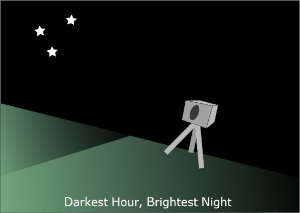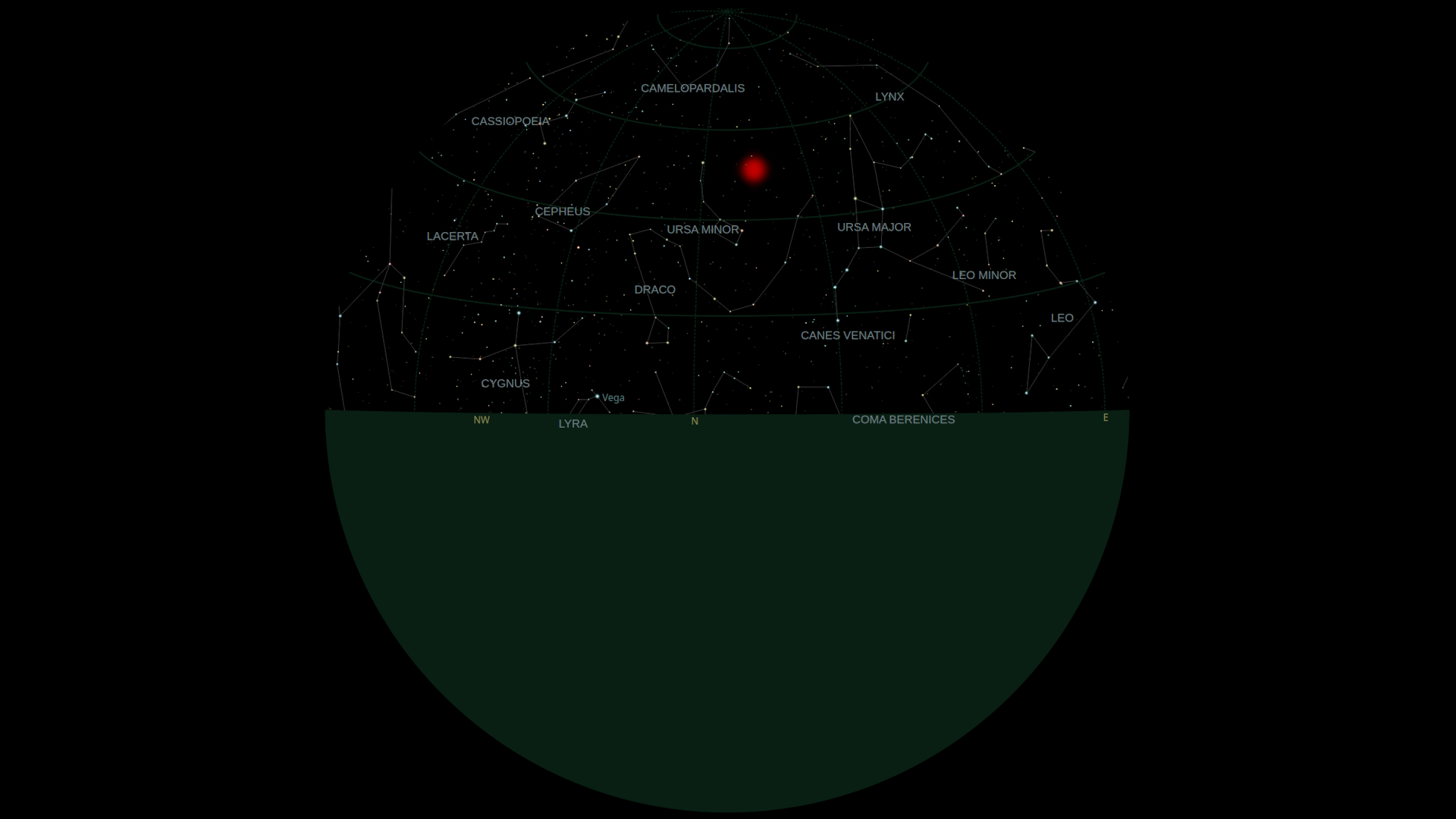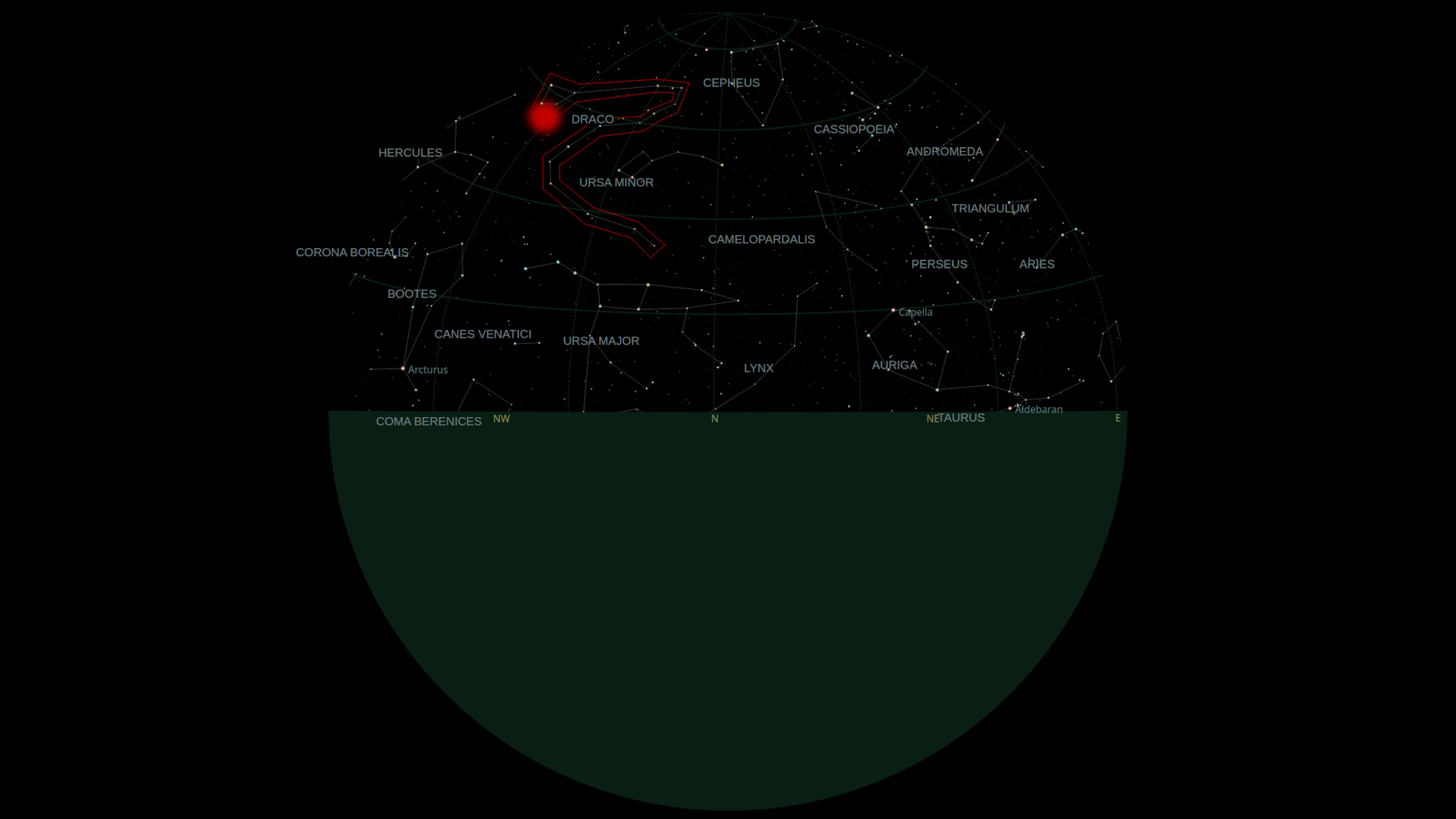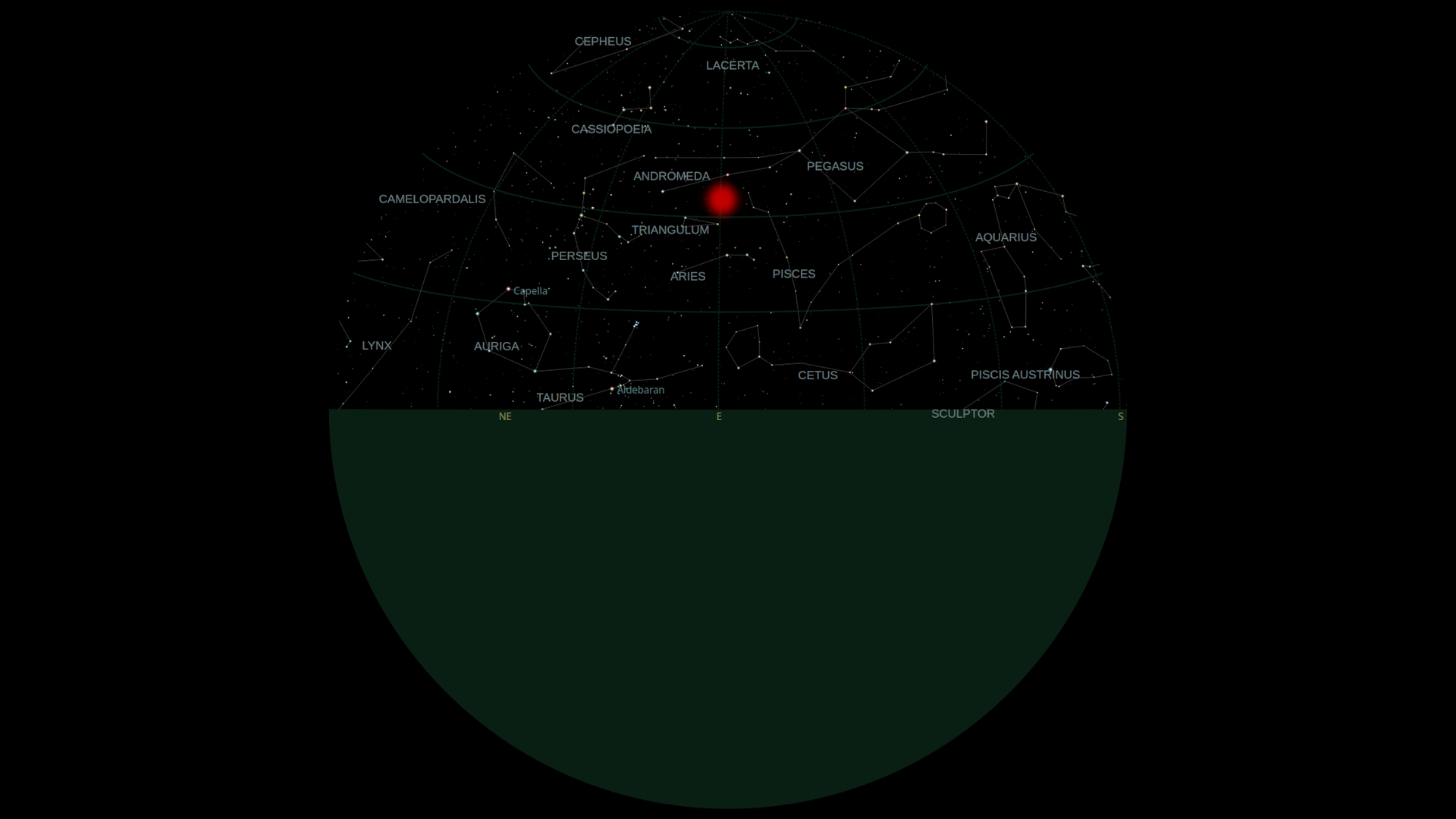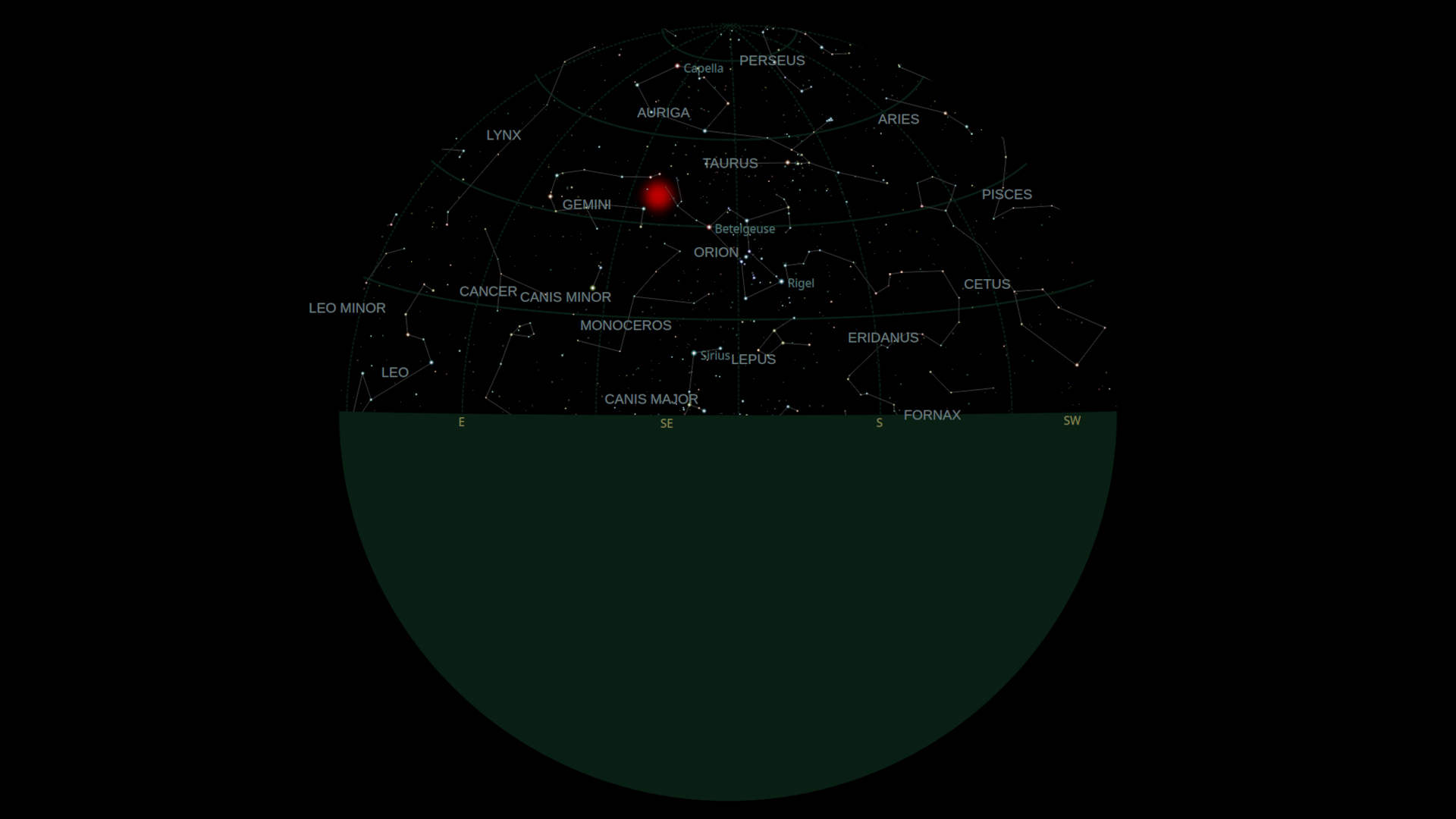Realm of Darkness
29th September 2021
October, for us northern hemispherians, means it is getting a bit darker. Great for those who enjoy watching and photographing the heavens
And with the darker mornings and evenings, means don't have to go to bed as late or wake up as early to shoot some stars
So what can you expect to see in, October?
5th October
The October Camelopardalids meteor shower can ideally be seen, just before dawn on the 5th
Ideal if you're an early bird. However sunrise doesn't occur until after seven if you're UK based, however, you may want to be up and watching before the street lights start turning on
Some of the meteor trails can be of a longer variety. If they catch the atmosphere at the right angle
There will be no moonlight, as the Moon is waning, about to enter a new cycle
The red circle on the image above, show the location you generally need to look at, as the meteors will appear to be coming from that location. The image is created using the Kstars software with a time setting of 4:00 AM, UK
And phone apps such as Sky Map, have the ability to point your phone and find constellations
Alternatively, you can jusr gaze north. The number of meteors per hour varies. So it is a case of watching and hoping
You don't require any equipment to just view the meteors
If you wish to photograph then point the camera in the direction of the meteors. Set the shutter speed to a couple of seconds, also set to repeating shots
6th October
The new moon occurs tonight. Which as you may know, we at DHBN quite like. As it reduces the amount of light in the sky
Thus allowing you to view other objects, that won't be overshadowed by the moonlight
8th October
If you would like to see a meteor shower, then the Draconids reaches its peak on the 8th/9th of October
And can be viewed just after sunset, which means not having to stay up late. The peak occurs on a Friday evening, so if you have children, you can get them interested in astronomy
However, it does occur when the street lights will be on, possibly disturbing your view. So unless you live in a dark area, you may need to go further than your back garden
You'll need to find the Draco constellation. Which is located in a North West direction
In the image above, with the time settings of 8:00 PM, UK. We've outlined the Draco constellation. And marked with a red circle, to show roughly where the meteors should appear to be coming from
Again you don't require any equipment to view
And to attempt to photograph. Set the shutter speed to a couple of seconds, also set to repeating shots
15th October
If you are interested in viewing a galaxy, then tonight is a good opportunity to view the M33 (The Triangulum Galaxy)
You won't be able to see it, without either a pair of
The image above shows, with a time of 10:30 PM UK, and the direction, where you should be looking. However, it may be visible after sunset
20th October
The Full Moon occurs, and as much as we like to complain about it. If you are looking to refine your astronomy / astrophotography skills, then it is an ideal object to practice on
The Full Moon rises just after six PM, however, it may be a while before can be seen fully
22nd October
If you wish to view the Orionid meteor shower, then tonight may be ideal
The shower starts at the beginning of October and ends in November, and can usually be observed from about 10:00 PM UK until sunrise
A good time to observe, if you are willing to wake up at the time is about 2:00 AM on the 23rd, as shown on the image above. With the red dot, showing the location, the meteors should appear to be coming from
As well as the street lights are more likely to be off
It is also a Saturday, so for those not having to work, it means the ability to go to bed afterwards and finish your sleep
The ZHR stands for Zenithal hourly rate. And is a calculation of how many meteors an observer may view per hour However, this number will be reduced by things, such a clouds and light pollution
And following the instructions from the other meteor showing, if you wish to photograph
24th October
The moon will be in apogee, which means it is slightly further from Earth, and thus may appear smaller. The moon has an elliptical orbit, so this occurs monthly
With the Full Moon having occurred a few days before, you can if you wish, compare it, too its usual size. This won't be noticeable if viewing, but may be possible with some astrophotography
31st October
Though there aren't any particular astrological events to mention. Don't forget the clocks do go back in the UK and Europe. Important if you planning on some astronomy opr astrophotography
And perhaps you'll be able to photograph some ghosts, as it is Halloween
Support
If you enjoyed the article, and would like to help us in creating more content. Then please consider donating via Buy Me a Coffee
Written by: Ben Patmore
Ben Patmore is an amateur astrophotographer
